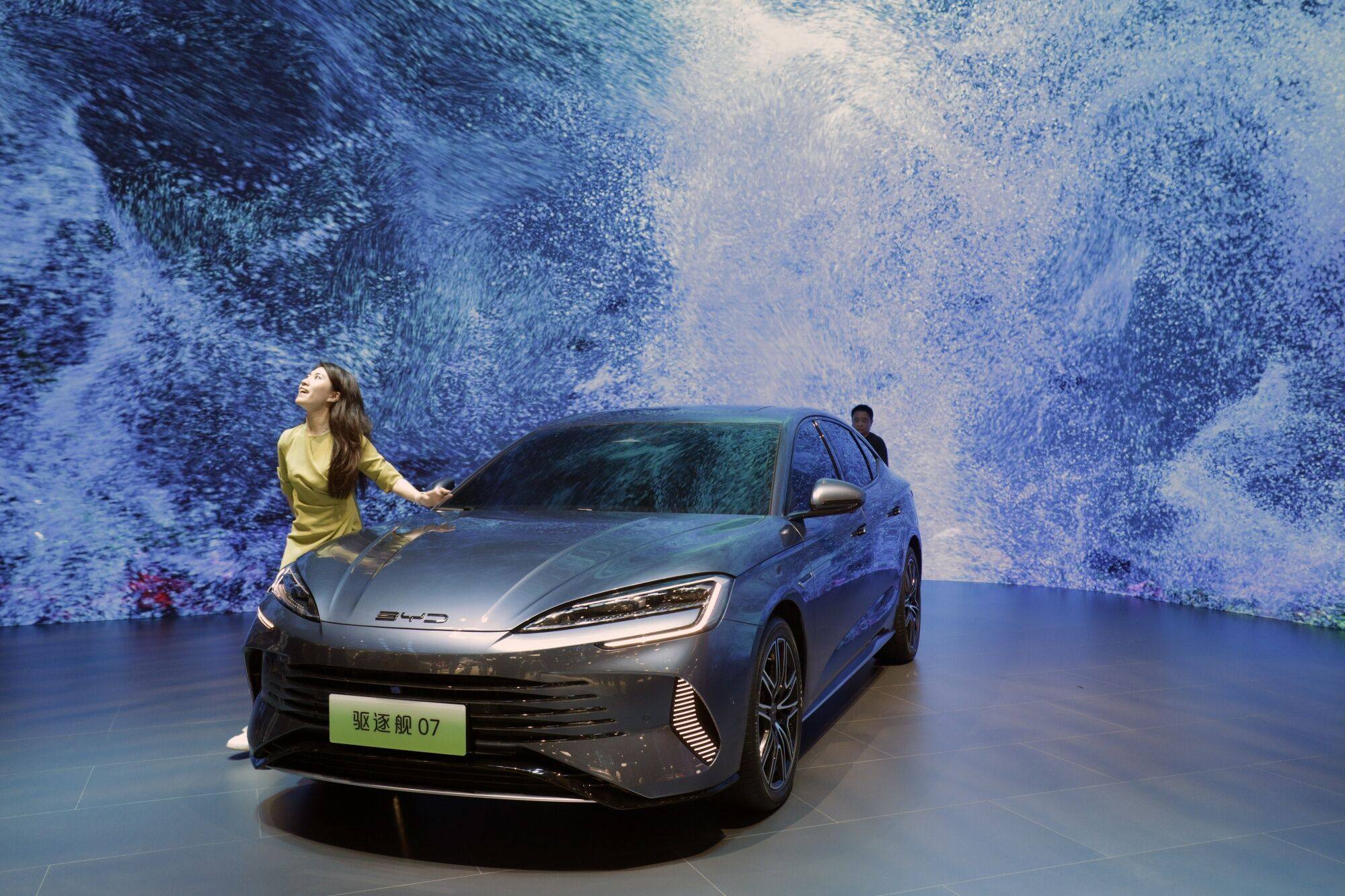Is there an overcapacity problem in green tech? Whatever the case of may be, it matters little to trade between China and the United States. Regardless of whether it’s a leading or modest exporter, China does not sell that many solar modules or electric vehicles (EVs) to the US. While Tesla’s market share in the US has dropped to barely above 50 per cent, its dominance is challenged mainly by German, Korean and other American competitors.
The US is making an issue over China’s capacities in green tech not as a market but as a competitor under threat. At issue is not whether there is overcapacity, but rather where the most competitive capacities are, in terms of quality, costs and technology.
Unlike basic commodities like steel, which are largely interchangeable, cars are highly differentiated products. No matter how well-made, the cheap Chinese cars of old were no threat to premium brands like BMW. But not so the latest EV models that are both technically impressive and affordable. And as EVs gain prominence, petrol cars will indeed face global overcapacities.
Around 18 million EVs are projected to be made next year, up from 10.5 million last year. But growing capacity alone does not quite equate with overcapacity. Unlike the solar industry a decade ago, the dynamics for the EV industry are far more complex. With high-cost producers in a high-priced market, the US faces more severe challenges within its own EV sector.
Most new industries go through stages of growth, proliferation and consolidation. EVs are no exception. China has been consolidating its EV industry. From a height of about 500 EV assemblers in 2018, there are an estimated 140 car companies (of all types) in China – a third of which may exit this year.
In the US, after Lordstown went bust last year, Faraday Future and Fisker may soon follow suit. Other US EV start-ups like Lucid and Rivian, despite respectable growth, have struggled with low sales volumes.

The proliferation of EV start-ups is shaped more by the forces of global capitalism than the support of governments. Venture capitalists are driven by an exuberant outlook on the trillion-dollar market potential and sky-high valuations of market leaders like Tesla and BYD.
Rivian hit a valuation of US$150 billion, far exceeding Ford’s, before falling to US$10 billion. Since Tesla, the US’ market economy has yet to produce another success of its kind. Meanwhile, GM and Ford have scaled back their EV ambitions.
Plug-in hybrid electric vehicles (PHEVs), which have a much wider range than pure EVs, are arguably more suited for the US market. Up until recently, the US was more focused on pushing full EVs. Demand for PHEVs in the US is still lower than that of pure EVs. But this gap can be bridged by Chinese suppliers, who lead in the world in affordable PHEVs.
Production capacity is only half the equation in supply-demand balance. Overcapacity is a result of unrealised market demand as much as industry proliferation. While European and Korean-made EVs are able to make use of US tax credits, Chinese EVs are largely locked out.
If EV pricing in the US can approach the level of China’s, demand will mushroom, absorbing much of the expanding capacity. Trade restrictions imposed by the US are arguably just as responsible for any unfolding EV overcapacities as China’s industrial output.
While the Biden administration supposedly puts a high priority on tackling climate change, a zero-sum mindset trumps US-China cooperation. The most effective way to increase EV demand in the US is to attract the likes of BYD to set up passenger vehicle manufacturing in the US, perhaps in partnership with GM or Ford.
How the US, home of trailblazer Tesla, lost the EV race to China
How the US, home of trailblazer Tesla, lost the EV race to China
Just like South Korea, Japan and the US, China had adopted industrial policies to promote certain industries at their early stages. Particularly, local governments in China have been key drivers. But relatively mature industries like solar and EVs are no longer dependent on government support in China. They have entered virtuous cycles of evolution, both improving technologies and reducing costs.
In the annals of economic development, industrial policies aimed at undermining the industries of rival states are rarely seen. The US is a unique exception exemplified by what it did to Japan’s semiconductor industry in the 1980s, and more recently to China’s 5G and green tech industries.
If China were to use the visible hand of the state to accelerate industry rationalisation, to comply with American wishes, it would only make Chinese market leaders stronger at an ever faster pace. Culling marginal players will boost the profitability of industry champions, making them more formidable rivals.
At issue is not so much the quantity of green tech capacities in China, but the quality of its highly competitive capabilities.
The rapidly evolving green technology landscape represents an ecosystem straddling economic ambitions, environmental imperatives and escalating geopolitical rivalries. US-China duels over techno-industrial strategies are pulling their green tech ecosystems apart. Balkanisation into fragmenting spheres is distorting resource flows, suffocating entrepreneurship and deterring cross-border synergy that is vital for green innovation.
Beyond narrow industry interests and the push to “buy American”, the overall effectiveness of the US’ green transition is at stake. The US needs to quickly expand its EV charging infrastructure, supply of EV batteries and availability of quality EVs (particularly PHEVs) at affordable prices – all areas where China is well-suited to effectively support the costs.
These complex challenges demand that enlightened self-interest transcend outmoded zero-sum mentalities. Frameworks for cooperative competition of carefully instituted win-win interconnectedness may help synergise the green industry ecosystems of US and China.
Winston Mok, a private investor, was previously a private equity investor




